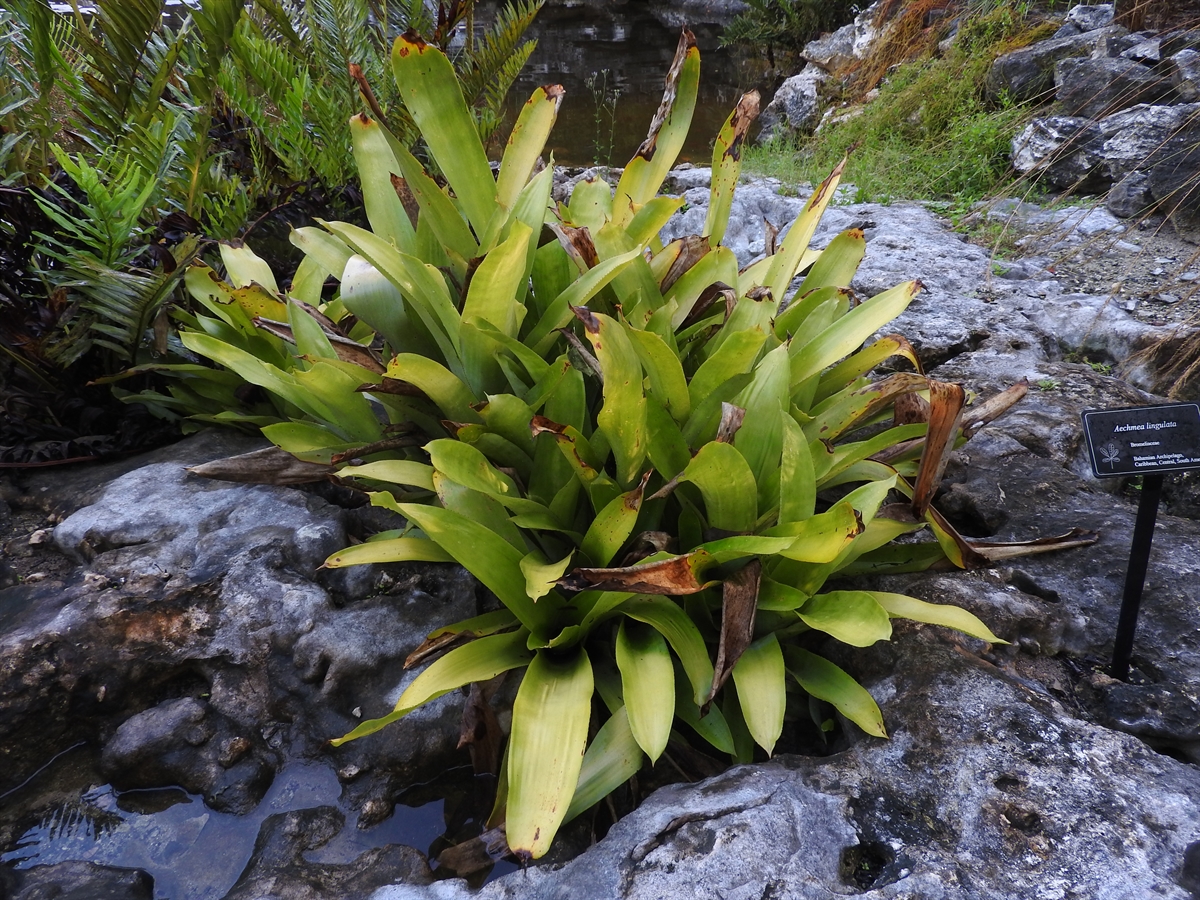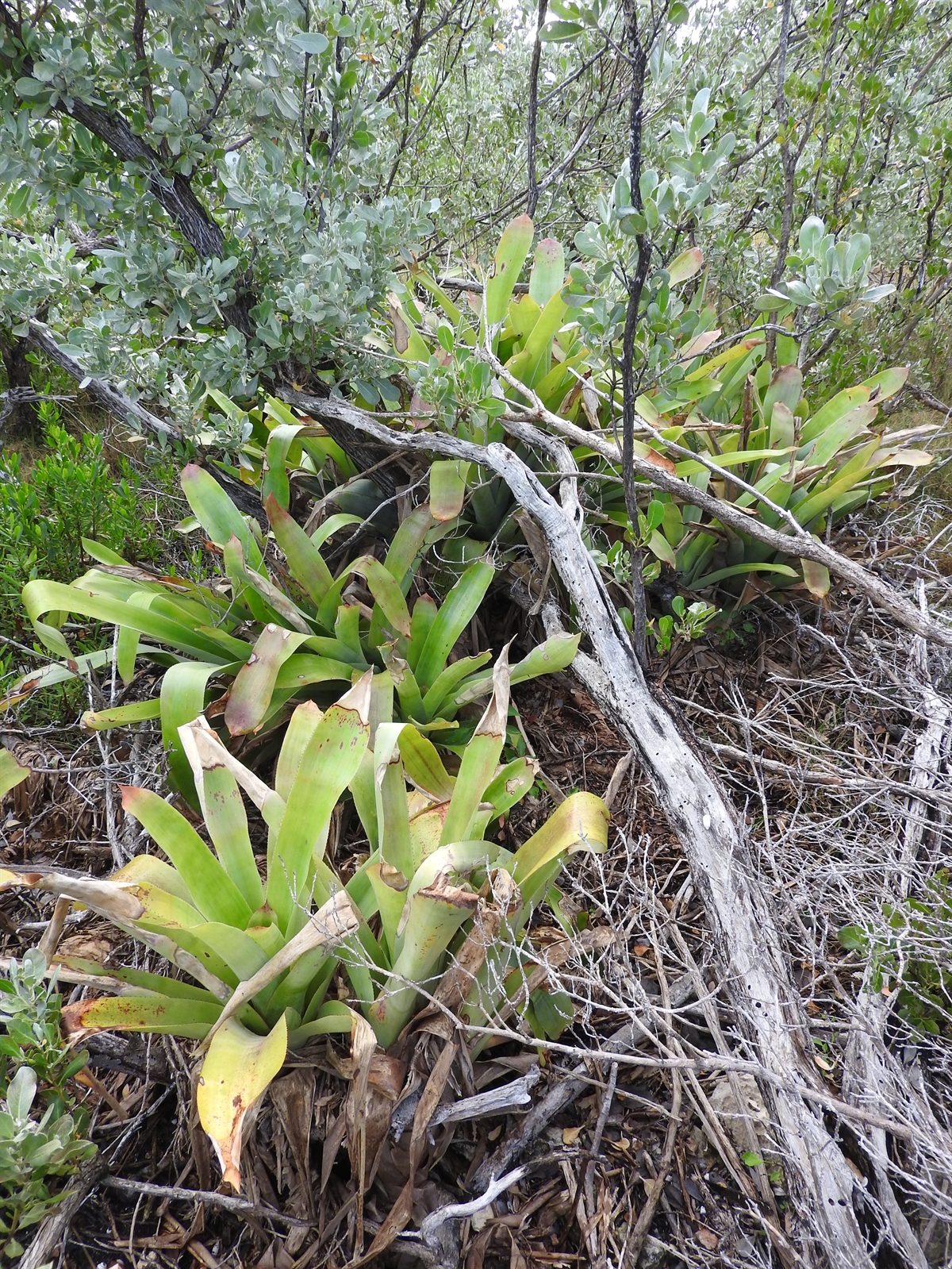Habit: Aechmea lingulata grows without discernible stems up to 1 m (excluding inflorescence) in height. The bright, light, green leaves are in a rosette forming a series of cups at their base that can hold water and detritus. The leaves are parallel veined, lanceolate, slightly serrated margin to 14 cm wide at the base and 1 m in length with a cusping leaf apex.
The complete, perfect, zygomorphic flowers, each with a subtending bract, are arranged in a bipinnate-spike that is 2 -4 times the length of the leaves. The lower bracts are leaf like while the upper are tightly appressed to the peduncle. There are 3 green unfused sepals in the calyx that exceed the length of the bracts with one strongly winged. There are 3 green unfused petals in the corolla that are shorter than the calyx. There are 6 stamens that are shorter than the petals. The ovary is inferior with 3 locules and numerous seeds. The fruit is a capsule that is equal in length to the sepals.
Habitat: Aechmea lingulata grows as an epiphyte on trees and shrubs in Mangrove and Fresh Water wetlands as well as very wet coppices.
Distribution: Aechmea lingulata is known to occur in the central and southern island groupings of the Lucayan Archipelago as well as the Caribbean region and Central and South America.
Medicinal/Cultural/Economic usage: Aechmea lingulata is not known to be used medicinally in the Bahamas.


